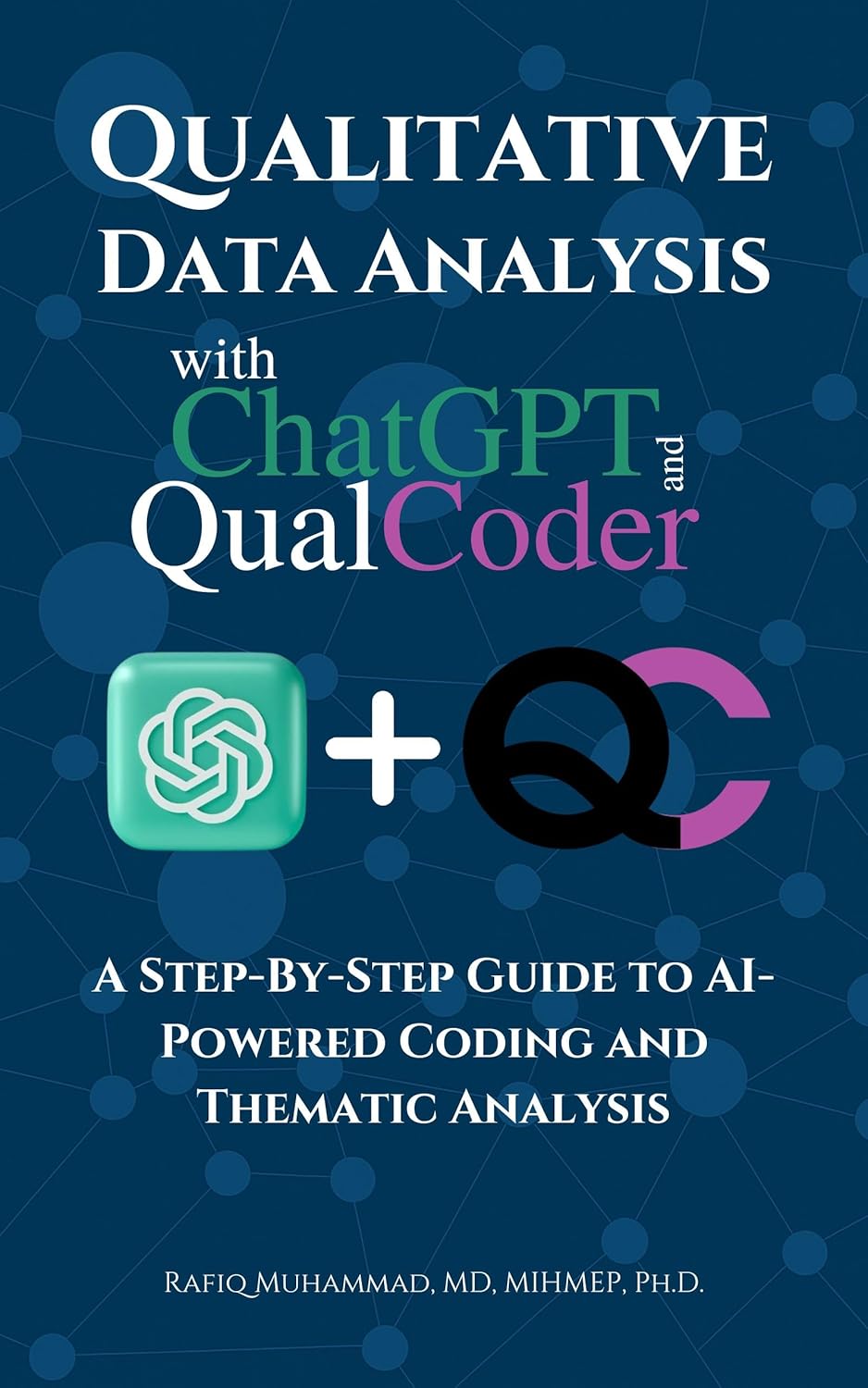Qualitative Data Analysis with ChatGPT & QualCoder
Qualitative Data Analysis with ChatGPT & QualCoder shows how to combine human judgment with AI-assisted coding to speed up rigorous qualitative data analysis. You’ll set up ChatGPT and run a step-by-step QualCoder tutorial, then use prompt patterns to draft code ideas, memos, and early themes—while you keep control of definitions, decisions, and interpretation.
Build a defensible codebook for inductive coding and deductive coding, run thematic analysis, and adapt workflows for grounded theory coding, content analysis, and narrative analysis. You’ll calculate coding reliability (consensus + metrics), document reflexivity in qualitative research, and apply clear guardrails for AI ethics in qualitative research—so your methods remain transparent and reproducible.
- QualCoder workflow: import transcripts, segment data, manage codes, and export results.
- ChatGPT for qualitative research: prompt templates for open coding, memoing, and theme testing.
- Building codebooks: names, definitions, inclusion/exclusion rules, and anchor quotes.
- Intercoder reliability: consensus steps plus quick checks for agreement and stability.
- Interview & focus group analysis: practical moves for turn-taking, co-occurrence, and saturation.
- Free qualitative coding tools: set-ups and exports you can reproduce without paid software.
- Mixed methods coding: link qualitative themes with survey or log data for triangulation.
- Data prep: dataset transcription, cleaning, chunking long files, and privacy-first redaction.
- Ethics & transparency: disclose AI assistance, keep audit trails, and protect participants.
Use the included qualitative research workflow to move from raw transcripts to publishable findings: prepare data → open/axial coding → theme building → evidence tables → write-up. Each step includes prompts, examples, and exports you can drop straight into your thesis or paper.
What’s inside
- Clear chapter-by-chapter roadmap
- Reusable templates and checklists
- Step-by-step examples from real projects
Who it’s for
- Graduate students (MA/MSc/PhD)
- Early-career researchers
- Supervisors seeking practical frameworks
What readers say
“Exactly what I needed to get unstuck.”
“Concise, rigorous, and practical.”
What you'll learn
- Set up ChatGPT + QualCoder for seamless AI‑assisted coding
- Craft prompts that yield meaningful codes and themes
- Integrate AI‑generated insights responsibly
- Manage data from preparation to final reporting
Frequently asked questions
Can I really use ChatGPT for qualitative coding and thematic analysis?
Yes—when used as an assistant. This book shows prompt patterns that help you generate initial codes, memos, and theme candidates, while you keep final judgment and rigor.
How do ChatGPT and QualCoder work together?
QualCoder handles transcripts, manual coding, and exports. ChatGPT accelerates open coding, pattern spotting, and theme drafts. You’ll iterate between both to refine a defensible codebook.
Is QualCoder free? Do I need NVivo or Atlas.ti?
QualCoder is free and open-source. You can complete full projects in QualCoder, or use it alongside commercial tools. The book includes a side-by-side workflow and export tips.
What data formats can I analyze (interviews, focus groups, CSV)?
Interviews, focus groups, field notes, and CSV text are supported. The guide covers preparing transcripts, cleaning text, and chunking long files for reliable AI prompts.
How do I build a robust, transparent codebook with AI?
You’ll start with researcher-generated seed codes, use AI to propose refinements and examples, and document inclusions/exclusions and anchor quotes to ensure traceability.
Does the book cover intercoder reliability/trustworthiness?
Yes. It shows consensus coding, audit trails, code-definition tests, and strategies for dependability and confirmability—plus how to log AI involvement clearly.
What about ethics, IRB, and privacy when using AI tools?
You’ll get redaction and de-identification checklists, disclosure language, and offline/limited-data workflows to protect participants and align with IRB/GDPR expectations.
Will AI “hallucinate” themes or distort findings?
It can if unguarded. The book includes verification prompts, triangulation steps, and rules for keeping human oversight central so themes remain data-grounded.
Can I use this for grounded theory, IPA, or thematic analysis?
Yes. Examples show how to adapt prompts and coding moves to GT, IPA, and reflexive thematic analysis while preserving each method’s logic.
How do I export codes and quotes for my thesis or paper?
You’ll learn to export codebooks, coded segments, and frequency tables from QualCoder, and to format evidence tables and theme write-ups ready for publication.
Do you provide reusable prompt templates?
Yes—starter prompts for open/axial coding, theme testing, discrepant cases, memoing, and method-specific write-ups you can adapt to your corpus.
Is this suitable for beginners to qualitative research?
Absolutely. The workflow assumes no prior coding software experience and emphasizes transparency, reflexivity, and method-fit over “automation.”
